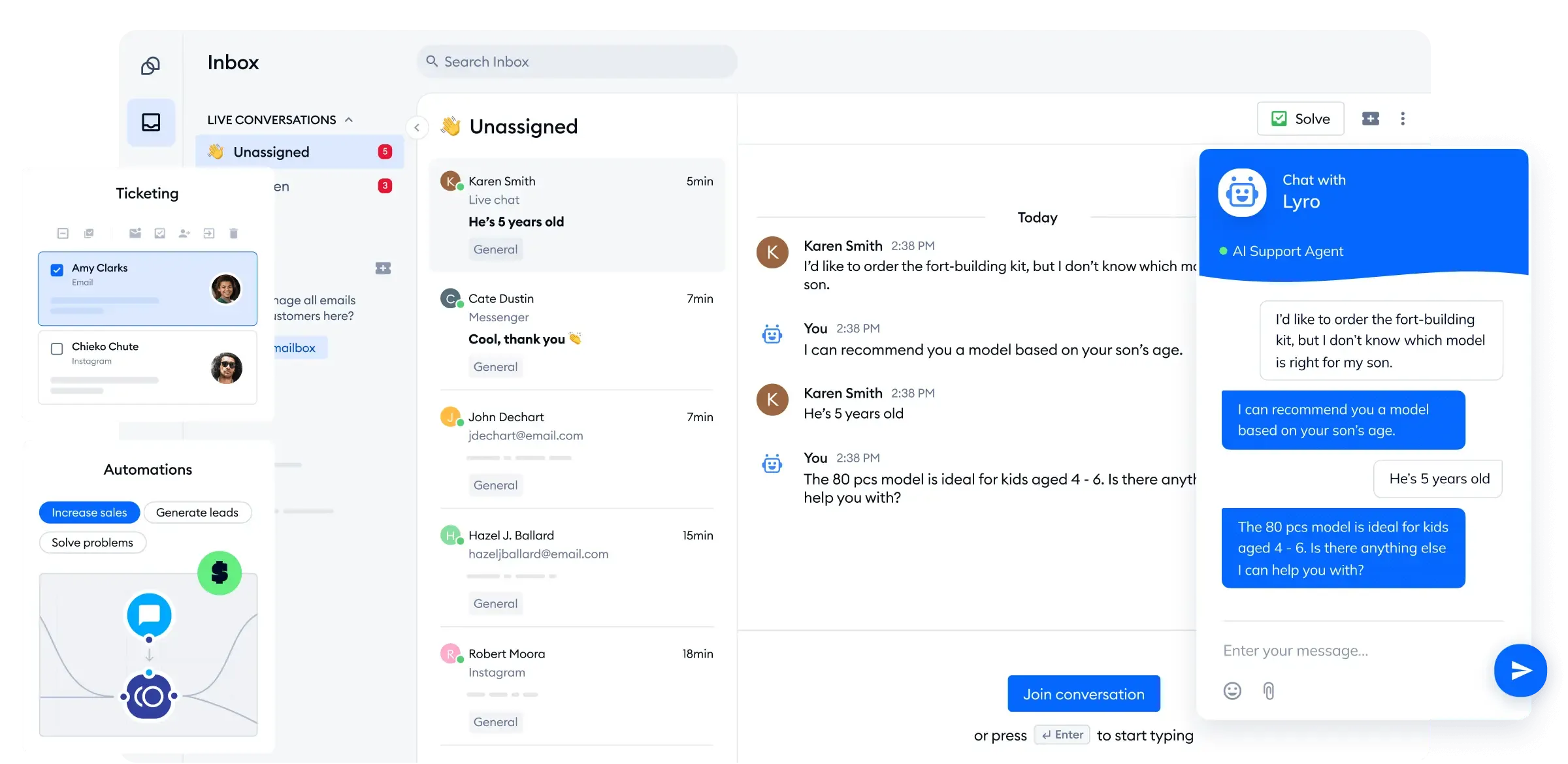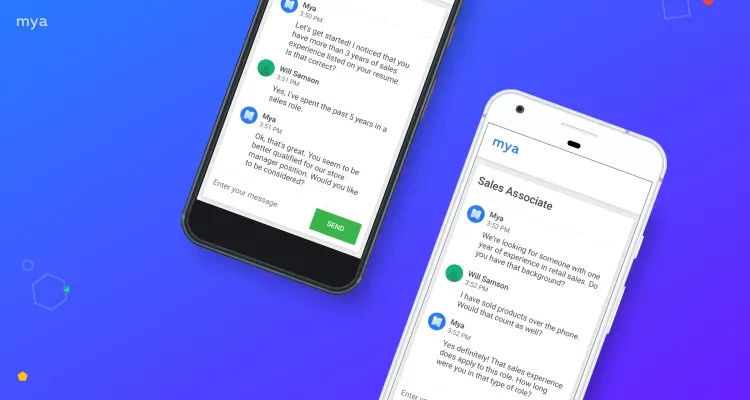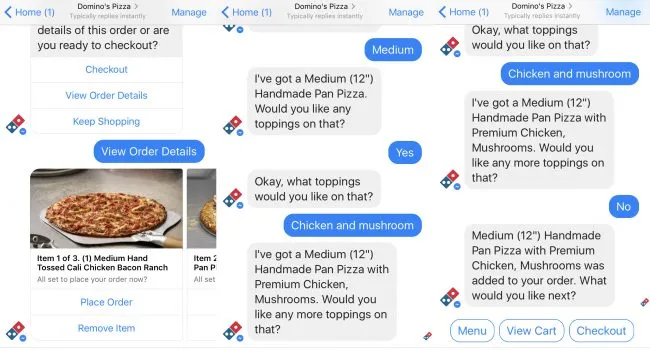How to Create a Great Chatbot Conversation Database

Chatbots are all the rage in marketing, sales, and customer support, and it’s easy to see why. You kill multiple birds with one stone, reaching your audience, increasing conversions, and improving customer experience with a single chatbot.
But every chatbot needs a conversation database to pull answers (and questions) from. While creating a chatbot conversation flow isn’t hard, we have a few tips for setting yourself up for success with your chatbot DB!
1. How Do Chatbots Work?
Generally, chatbots have some type of front end or user interface where users can type their questions or select options. They also have a back end with the logic determining which answers will be displayed to the users.
Here, it’s important to distinguish between rule-based and AI-based chatbots.
What Are Rule-Based Chatbots?
Rule-based chatbots contain simple logic that allows them to only deal with a limited number of pre-defined questions and answers. This logic has rules that determine what answers will be displayed to a user based on the question.
What Are AI-Based Chatbots?
In contrast, AI-based chatbots use artificial intelligence and technologies like machine learning and natural language processing to understand open-ended questions.
And, because of the AI technology, AI-based chatbots continue to improve as they interact with more users. So, over time, your chatbot will be able to answer more questions more accurately without you pre-programming those answers in the database.
No matter what chatbot you use, you’ll need to store the data it will use to provide the answers.
How to Train Your Chatbot

You can train the chatbot manually, which means you’ll compile a database of questions and their answers.
So, for example, a rule-based chatbot can use the visitor’s query to retrieve the response from the database.
You can also train the chatbot automatically. In this case, you’ll use machine learning algorithms to train the chatbot on your documents.
For example, an AI-based chatbot can train itself on the questions and answers in historical user conversations and provide accurate, contextual answers based on the user’s query.
2. Which Databases Work Best for Chatbots?
One of the most important decisions you’ll make about your chatbot is what type of database to use. There are two main types of databases: relational and non-relational.
Relational databases are great for structured data, meaning information that fits neatly into rows and columns. Think of it like a spreadsheet. Some popular relational databases are MySQL and Microsoft SQL Server.
Non-relational databases, on the other hand, are ideal for unstructured and semi-structured data. This is the kind of data that comes from natural language inputs, like what you get in a conversation.
Non-relational databases are also highly scalable and flexible, with examples like MongoDB, Cassandra, and Amazon DynamoDB.
But if you want to build a chatbot that can handle complex queries and contextual conversations, then the answer is a conversational database.
It’s a subsection of non-relational databases specifically designed for chatbots. They’re pre-trained with conversational data and use natural language processing (NLP) algorithms to understand user inputs and provide relevant responses.
Examples of conversational databases include Rasa, BotStar, and Dialogflow. But, of course, you can create your own that’s created with the info you have on hand.
So which database is best for chatbots? It ultimately depends on your needs and the type of data your bot will need to handle.
3. Great Chatbot Database Examples
Let’s take a look at some real-world examples of chatbots that are using conversational databases to deliver a great user experience.
Tidio

Source: Tidio
First up, we have Tidio, an ecommerce support bot that can handle real-time customer service, manage email marketing campaigns, collect contact info, and generate leads, all thanks to its conversational database. Tidio is able to provide personalized responses to users based on their queries and past interactions.
Insomnobot 3000

Source: Insomnobot3000
If you’re having trouble sleeping, the Insomnobot 3000 has got you covered. Created by Casper, the mattress and sheet company, this chatbot was designed to provide a bit of company for people having trouble sleeping. It’s a great example of using a chatbot for a marketing campaign, and its conversational database helps it provide personalized responses to users.
Globe Telecom
Source: Globe Messenger
Finally, we have Globe Telecom, the major telecom company servicing over 60 million Filipinos. They introduced a chatbot that’s lowered support calls by half and increased overall customer satisfaction. And it’s all thanks to the bot’s conversational database, which helps it quickly provide users with the information they need.
Mya

Source: Venture Beat
Looking to simplify the recruiting process? Meet Mya, the HR chatbot that can help set up interviews, screen candidates, and much more. Mya’s conversational database allows it to quickly retrieve information and provide relevant responses to users.
Dom the Pizza Bot

Source: IPG Media Lab
Now, who doesn’t love pizza? With the Domino’s Bot, users can order pizza right from Facebook! The bot remembers past orders and even tracks orders in progress, all thanks to its conversational database. So next time you’re craving a pizza, just let the bot handle it!
4. How to Create a Great Chatbot Conversation Database
Although building a chatbot query database isn’t rocket science, it will take some smarts. Here are some best practices to make your chatbot’s conversational data rock:
Use Data Specific to Your Business
If you want your chatbot to be relevant to your business, use language specific to your industry and audience.
For example, if you’re running an e-commerce website, your chatbot should be able to answer questions about product availability, shipping options, and returns.
By using business-specific data, you can ensure that your chatbot is providing relevant and helpful information to your customers.
Collect as Many Utterances as You Can
The more utterances your chatbot has access to, the better it can understand and respond to users’ queries. Make sure to collect as many possible ways a user could ask a question or make a request, and consider variations in spelling and grammar.
If your chatbot helps customers book flights, you might collect variations of “I want to book a flight” like “Can I reserve a flight?” or “Book a plane ticket for me.”
Don’t Forget Intent
When creating your chatbot’s conversation data, keep in mind the user’s intent. What is the customer’s goal, and what outcomes are they looking for? Understanding the user’s intent can help your chatbot provide more accurate and relevant responses.
Take this example– if a customer asks “What are your business hours?” the intent might be to find out when they can visit your store, so your chatbot could respond with specific store hours instead of general business hours.
Prioritize FAQs
Start with common questions your customers have and make sure your chatbot has answers for them. This will help your chatbot feel useful right out of the gate, and give your customers a good experience. If you don’t have a lot of FAQs, you could gather questions from customer support or feedback channels.
Test and Iterate
Even with the best intentions, your chatbot may not understand every question or request. That’s why it’s important to test your chatbot regularly and make improvements based on user feedback.
Be open to user suggestions and consider implementing features that make the chatbot experience more intuitive and helpful for customers.
Understanding the Limitations of Chatbots
While chatbots can be incredibly useful for businesses, keep in mind that it’s not a perfect solution. Here are a few common limitations to consider:
- Lack of Emotional Intelligence: Chatbots can’t understand human emotions like sarcasm, irony, or humor.
- Limited Ability to Handle Complex Requests: Chatbots are only as good as their database and programming, and can struggle with complex requests that they are not programmed to handle.
- Language Barriers: Chatbots can struggle with understanding different languages, slang, etc.
- Lack of Personalization: While chatbots can provide some level of personalization, they can’t the same level of customization as a human CSR.
- Limited Understanding of Context: Chatbots are getting better at understanding natural language, but they still have trouble grasping context. They might misinterpret a user’s intention and provide irrelevant responses, which leads to a frustrating user experience.
Make Sure Your Chatbot Has a Unique Name and Personality
Remember, the goal of a chatbot is to answer questions and provide information while maintaining the impression that the user is speaking to a human, not a machine.
The first step in getting your chatbot to sound human is to give it a unique name and personality.
When choosing a name, you should use wording and phrases that reflect your brand’s identity. The personality you choose depends on your brand and your target audience. This seems simple, but it’ll determine how your chatbot communicates with your customers.
So, you should decide if you want the chatbot to be, for example, more professional, formal, or more informal and friendly. When you’ve outlined your voice, you should pre-program the answers to suit it.
Typically, we find that friendly chatbots work best, but your mileage may vary.
Make Your Chatbot Simple to Talk To
When customers interact with your chatbot, they want help or have questions. If you use chatbots for customer service, they might also be distressed. The last thing you want to do is send them on a spiral that ends with frustrated tweets.
That’s why you should ensure that your chatbot is simple to talk to, straightforward, and easy to understand.
You should also ensure that you create a natural conversation flow. This will make your chatbot sound more human and help in cases where it has to triage distressed customers.
Create a natural conversation flow by using simple language and a clear tone. Allow your visitors to ask and get answers to common questions. Once you can provide assistance quickly with useful answers, you’ll significantly improve your chatbot experience.
(In contrast, you don’t want your chatbot to be a word-for-word replica of your knowledge base.)
Develop Specific Expertise For Your Chatbot
You shouldn’t create a chatbot to answer all the questions your customers might have. That’s what your knowledge base is here for!
So, to make your chatbot as effective as possible, you should give it specific expertise. As such, you should focus every chatbot on a particular area of your business and give it only one or two goals.
For example, you might use one chatbot that answers product-related questions, one that provides support, and another that can provide sales or account-related information.
One of the main benefits of this approach is that it helps you solve your customers’ issues faster. When it comes to sales, this helps you connect with the prospect quicker and increase the number of chatbot conversions or demo bookings.
Use Your Chatbot to Triage for Humans
You can’t always anticipate the questions your customers might have. Sometimes, they’ll be too complex for a chatbot to help. That’s why you want clear triage rules; what goes to the human agents’ priority queue, and what’s marked as resolved?
When you outline your triage rules, include them in your chatbot conversation database responses.
For example, the chatbot can tell the customer that a support agent will be in contact by phone or email. This is a practical approach to reducing customer frustration while maintaining customer satisfaction.
(Bonus points if you give them a rough response time!)
Making it Easier to Create a Great Chatbot Database
In most cases, when you create a chatbot conversation database according to the best practices, you’ll need to use a relational or non-relational database.
The problem is that this injects some complexity into the process. It can get pretty tricky if you don’t have the time or expertise to work with these databases.
Fortunately, there is a simpler solution. You can use Sheet Best, which turns your (chatbot conversation) spreadsheets into REST APIs. Simply add the answers to your chatbot’s conversation database and plug your API into your chatbot software.
And as another benefit, once you’ve populated your spreadsheet with questions and answers, you can have your API ready in as little as 30 seconds!
Learn more about how B4BCompany provides excellent chatbot experiences to their clients with a bit of help from Sheet Best.
Then, sign up for your free account and chat away!